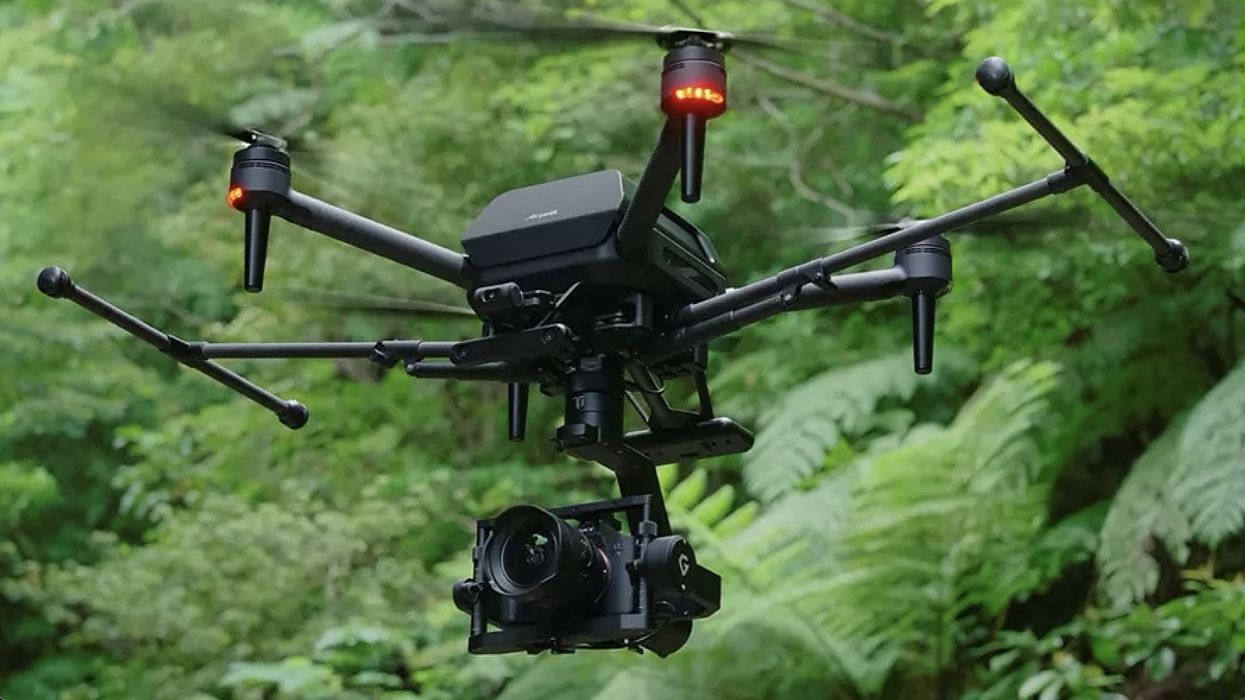Sony’s Drone Was Built for Your Mirrorless Camera
After months of teasers, Sony has finally released full specs of its very filmmaker-friendly drone, Airpeak.

Sony has been teasing the release of Airpeak S1 all spring, and we're excited to finally be looking at full specs and final images of the new drone platform.
The drone market is currently heavily dominated by DJI. Other companies, even with great track records, have struggled to move into the space. Users are excited by Sony since it promises a level of integration between the camera (made by Sony) and the drone that can offer huge imaging benefits.
Of course, this comes at a relatively hefty $9K price tag, but that also serves as an indicator of who Sony is targeting with this drone and hopefully promises more offerings to come.
The Airpeak S1's standout feature is that it's a drone platform built around integration with Sony's popular Alpha line of mirrorless full frame cameras along with the FX3 cine platform.
So if you already own and love your Sony a1 or a7S III cameras, you are halfway there. By taking the camera that already frequently serves as A-camera on so many productions and flying it, Sony is offering the opportunity for drone footage that is guaranteed to match perfectly with the rest of your footage. It's the same camera and lens, after all.
To do this on other platforms you are looking at renting something like the heavier-duty Matrice lineup from DJI, rather than something like their integrated DJI units. The Matrice lineup is getting a bit long in the tooth in terms of the refresh cycle, meaning that some of the newer features we see with Airpeak aren't necessarily available yet on that platform.
New features
What are those fresh features? Well, one of the major focuses of the S1 is accurate location awareness for the drone.
On top of the typical GNSS (global navigation system, the overall term for systems such as GPS or GLONASS) tracking, the S1 also has five sets of stereo cameras, barometric pressure, inertial detection, and infrared to estimate position even when you can't get a GPS signal.

Why should filmmakers care about accuracy tracking? The feature has tremendous industrial uses, since you can repeat flight plans perfectly over and over, and record them in time and repeat them months or years apart.
Inspecting powerlines? You can run the precise flight plan over and over again, making comparisons between the inspections easier since they will be scaled identically. If you aren't doing a side-hustle as an inspector, however, very accurate repeatability has filmmaking applications in compositing.
Want a long slow drone move that changes from winter to summer? Fly the shot in winter, fly it in summer, and the more accurate the recreation of the flight path, the easier your composite will be.
The app
This is where the integration of the camera and drone really comes together. You control everything, Sony Alpha camera, lens, and drone, all from a single iOS application, which even allows for dual operator mode (one flying the drone, the other operating the camera).
That also means all that data from all the systems gets recorded and tracks all together, making repeating camera moves that much more accurate. Since we already know that Sony has been mounting internal motion sensors in their newer cameras, we now see another application of that tech.
The S1 is also fast. It can go from resting 50mph in just 3.5 seconds, which is faster than pretty much everything but the FPV offered from DJI.
And while the FPV is wonderful and a ton of fun, it's not really targeted at filmmakers and can't really offer the operating flexibility you get with an S1 and an a1 attached to it. (Read our review of the FPV here.)
Being able to do that, operate in 44-degree winds, and reach a top speed of 56mph is impressive for a unit that can weigh 5 lbs or more depending on camera and lens combinations.
Drones are tough. GoPro proved that with Karma. But Sony has a pretty long track record now of moving into spaces and becoming dominant. That "S1" model name really does call out for an "S2" or, in keeping with Sony's conventions, maybe an "S7." This one is probably too pricey for most of us to purchase, but the thinking and integrations appear very slick, and if Sony can make this a success we're excited to see what DJI will do to counter.
The Airpeak is arriving in September. Check out the Airpeak Portal for more.












